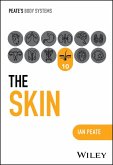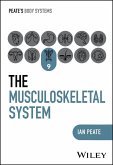PEATE'S BODY SYSTEMS THE NERVOUS SYSTEM
A CONCISE, ILLUSTRATED, AND ACCESSIBLE GUIDE TO THE NERVOUS SYSTEM
Each of the twelve volumes in Peate's Body Systems series is rooted in the belief that a deep and thorough understanding of the human body is essential for providing the highest standard of care. Offering clear, accessible and up-to-date information on different body systems, this series bridges the gap between complex scientific concepts and practical, everyday applications in health and care settings. This series makes for an invaluable resource for those committed to understanding the intricacies of human biology, physiology and the various systems that sustain life.
The Nervous System is the perfect companion for students and newly registered practitioners across nursing and allied health fields with an interest in neurological care, providing a comprehensive yet easy-to-digest guide for both academic and clinical application.
A CONCISE, ILLUSTRATED, AND ACCESSIBLE GUIDE TO THE NERVOUS SYSTEM
Each of the twelve volumes in Peate's Body Systems series is rooted in the belief that a deep and thorough understanding of the human body is essential for providing the highest standard of care. Offering clear, accessible and up-to-date information on different body systems, this series bridges the gap between complex scientific concepts and practical, everyday applications in health and care settings. This series makes for an invaluable resource for those committed to understanding the intricacies of human biology, physiology and the various systems that sustain life.
The Nervous System is the perfect companion for students and newly registered practitioners across nursing and allied health fields with an interest in neurological care, providing a comprehensive yet easy-to-digest guide for both academic and clinical application.
- Equips healthcare students and practitioners with the necessary information to provide safe and competent care
- Features colourful illustrations to aid comprehension, clarify complicated concepts, and render content more engaging and accessible
- Empowers readers to adapt to a rapidly evolving healthcare landscape, preparing them for the future of healthcare delivery
- Contains information necessary for effective patient care of those with stroke, dementia, Multiple Sclerosis (MS), and other diseases and conditions of the nervous system
Dieser Download kann aus rechtlichen Gründen nur mit Rechnungsadresse in D ausgeliefert werden.









